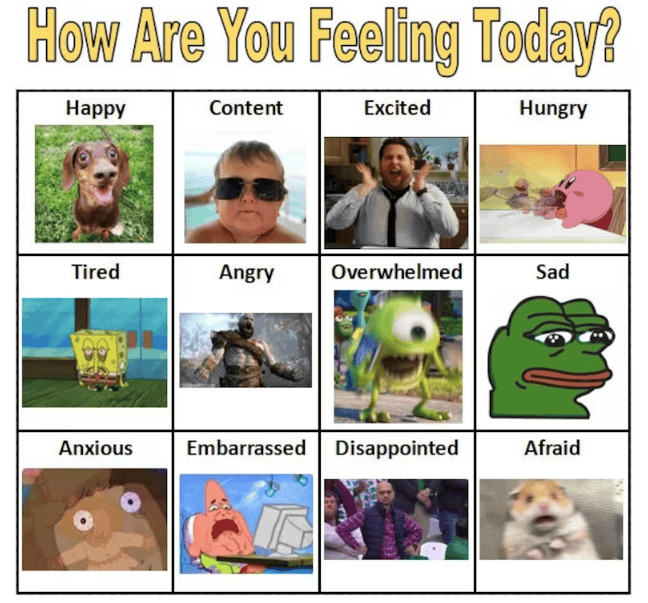How to Feel Your Feelings: Emotions are Messengers

We’ve all heard that it’s important to “feel your feelings,” but let’s be real – sometimes it feels like your emotions are speaking a foreign language.
What if I told you that your feelings are trying to tell you something? Yep, those pesky emotions are more than just inconvenient guests; they’re messengers with some pretty important intel.
Emotions are often misunderstood as inconvenient or irrational experiences.
However, viewing them as messengers can transform our relationship with our feelings.

Signs You’re Not “Feeling Your Feelings”
You might be struggling to process your emotions if:
- You frequently suppress or ignore your feelings
- “I’m fine” is your default response, even when you’re not
- You habitually change the subject when emotions come up
- The idea of expressing vulnerability makes you uncomfortable
The Message Behind the Emotion

Picture this: your emotions aren’t just random fireworks in your brain. They’re more like old-school telegrams, urgently tapping out messages about what’s going on in your life.
Each emotion carries a specific message:
- Anger: Something is unjust or a boundary has been crossed
- Fear: Potential threat or danger is present
- Sadness: A loss has occurred or a need is unmet
- Joy: Something aligns with your values or fulfills a need
- Disgust: Something might be harmful or contaminating
1. Recognize the Messenger
Playing “Name That Tune” with your feelings can actually calm your brain. Instead of saying “I am angry,” try “I feel angry.”
This subtle shift creates a bit of distance between you and the emotion, allowing you to observe it more objectively.
Related: 9 Examples of Emotional Boundary Violations from Popular TV Shows
2. Receive the Message
Once you’ve identified the emotion, treat it like it’s your friend trying to tell you something important.
Decoding Emotional Messages

Ask yourself:
- What is this emotion trying to tell me?
- What need or value does this emotion highlight?
- What action, if any, is this emotion urging me to take?
3. Validate the Message
Remind yourself that all emotions are valid messengers, even if the message isn’t always accurate.
Your fear of public speaking is trying to protect you, even if the threat isn’t real.
4. Respond to the Message
After understanding the message, decide how to respond:
- Does this require immediate action?
- Is there a need that I can address?
- How can I honor the message while acting in alignment with my values?
- Should I just let it go? (no singing required)
Important: If you are experiencing thoughts of harming yourself or others please seek professional mental health treatment
Common Emotional Messages and Their Meanings
Anger as a Boundary Guard
Message: “A boundary has been crossed” or “Something is unjust”
Action: Assess the situation and communicate your boundaries clearly. If these situations repeat often, it may be worth pursuing a more structured approach, such as an anger management evaluation and assessment, to understand patterns and develop healthier strategies.
Fear as a Safety Monitor
Message: “Potential danger ahead” or “Preparation needed”
Action: Pause to evaluate risks, gather necessary information, and take steps to increase your sense of safety.
Sadness as a Connection Reminder
Message: “Something important has been lost” or “A need is unmet”
Action: Allow yourself to grieve and identify what needs attention
Joy as a Value Compass
Message: “This aligns with your values” or “A need has been met”
Action: Recognize what brought joy and seek more of it
Practical Techniques for Reading Emotional Messages
- Body Scan: Regularly check in with your body to catch emotional messages early
- Emotion Journaling: Record emotions and their messages to spot patterns over time
- Mindful Pause: When an emotion arises, pause to ask what message it’s delivering
This article covers improving emotional wellness. You can learn how to improve the other 4 areas of wellness in my article here.
Challenges in Interpreting Emotional Messages
- Mixed Messages: Sometimes emotions send conflicting messages. In these cases, take time to untangle each emotion’s specific message.
- Outdated Messengers: Some emotional responses may be based on past experiences and no longer relevant. Acknowledge the emotion, but recognize when the message doesn’t fit the current situation.
- Misinterpreted Messages: We can sometimes misread our emotions. Practice and patience are key to improving your emotional literacy.
Conclusion
Viewing emotions as messengers transforms them from inconveniences to valuable sources of information.
By learning to receive, interpret, and respond to these messages, you can navigate life with greater awareness and intentionality.
So the next time you feel an emotion bubbling up, don’t push it away. Instead, your feelings might just be trying to tell you something important.
[Note: While this approach can be helpful, it’s always advisable to consult with a mental health professional for personalized guidance, especially when dealing with intense or persistent emotions.]


